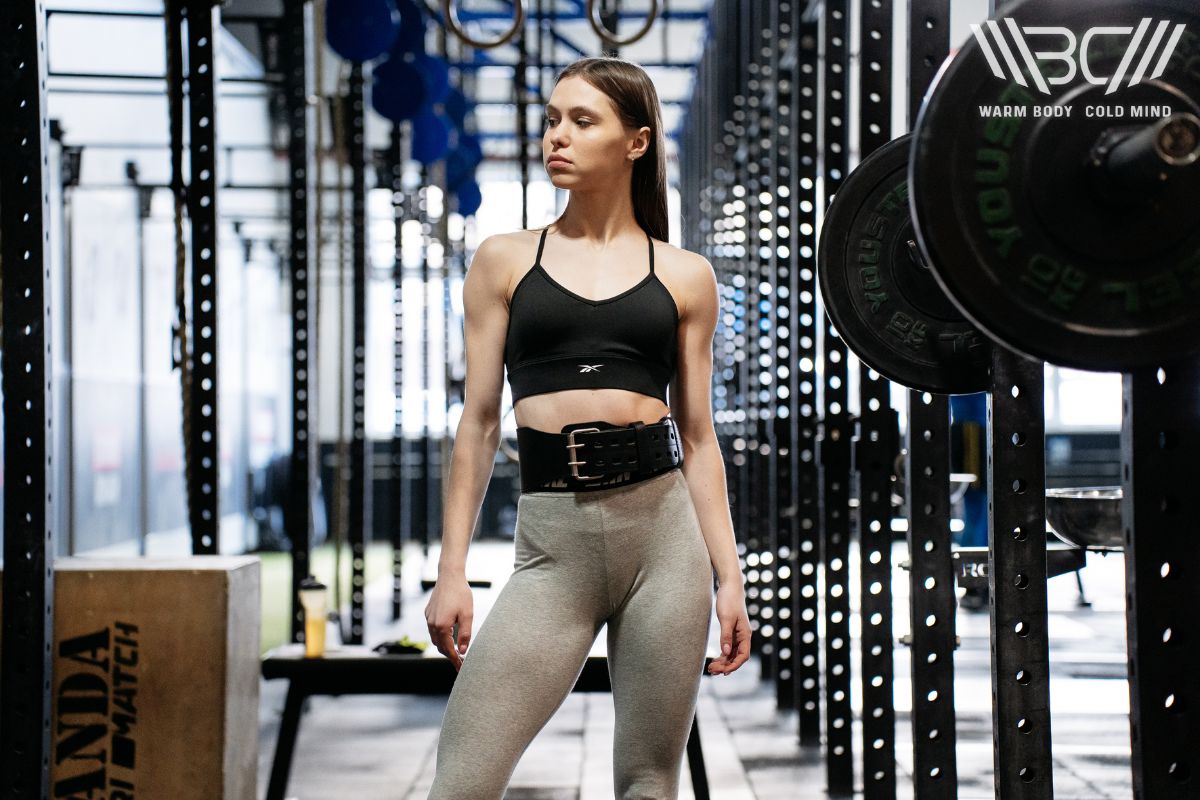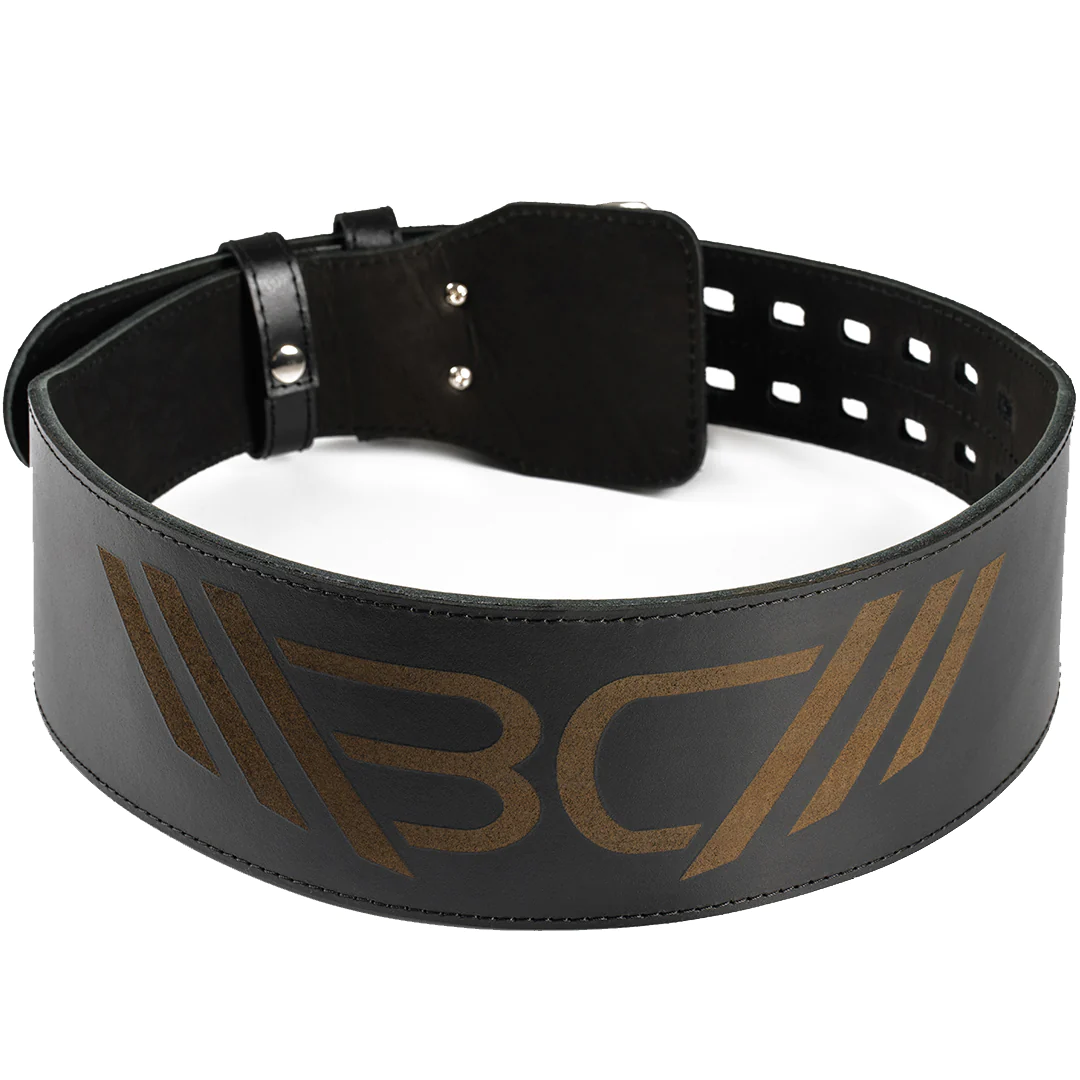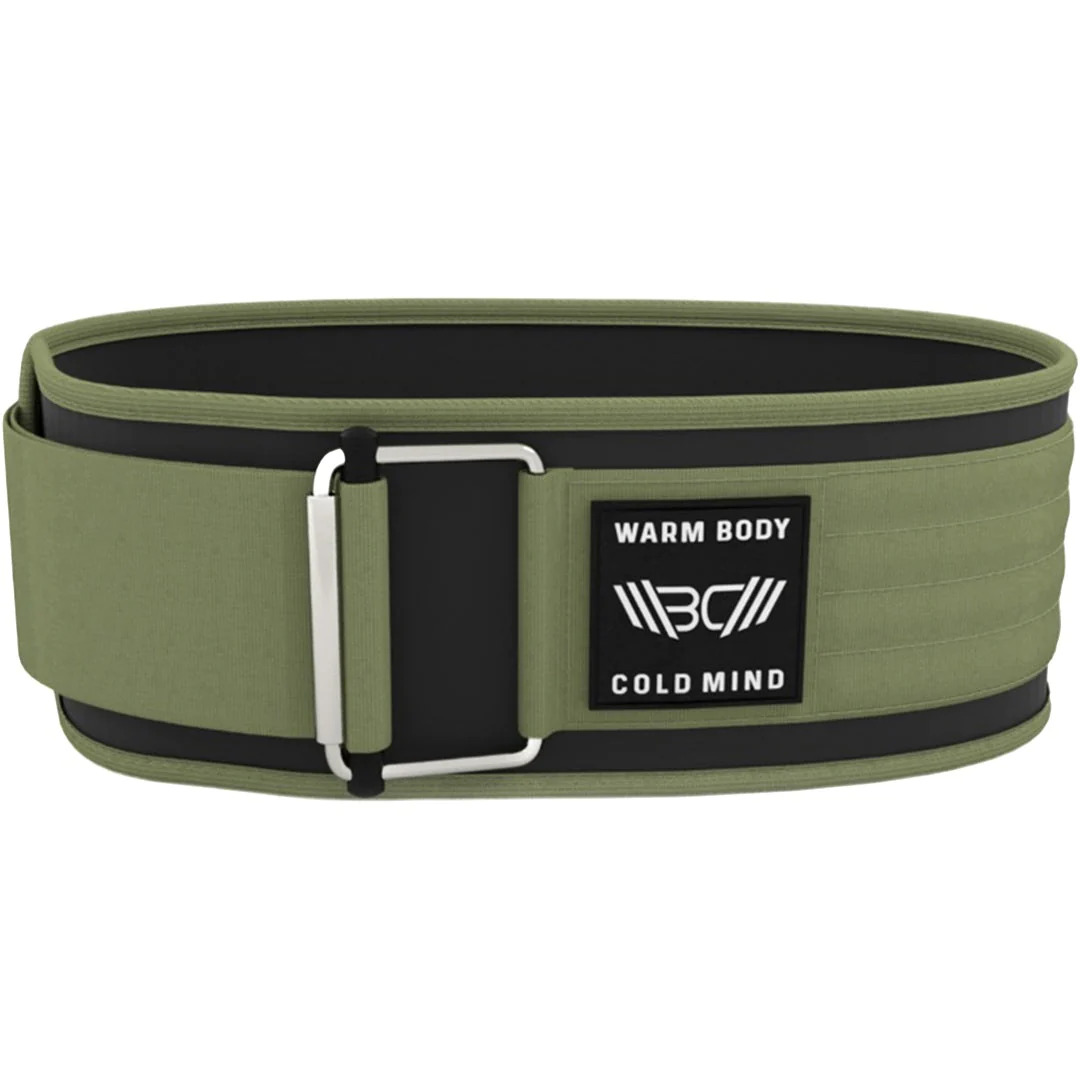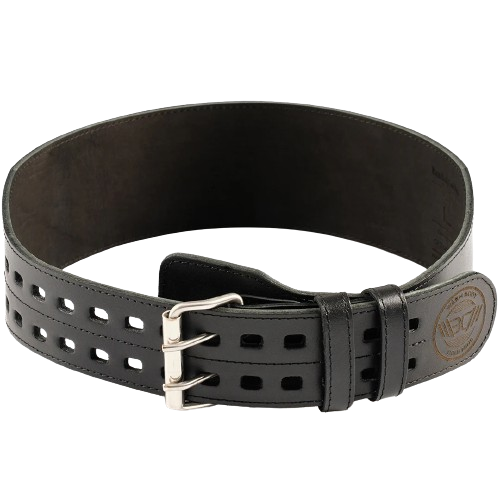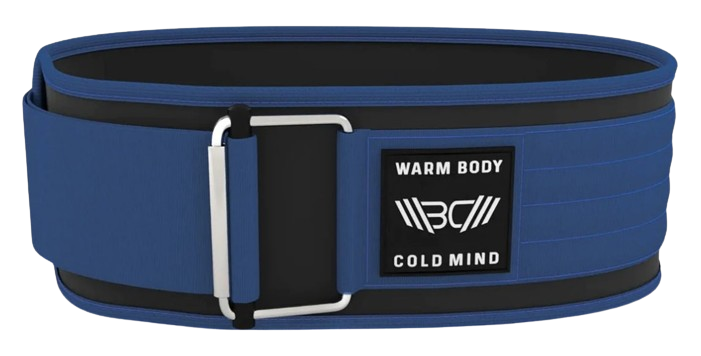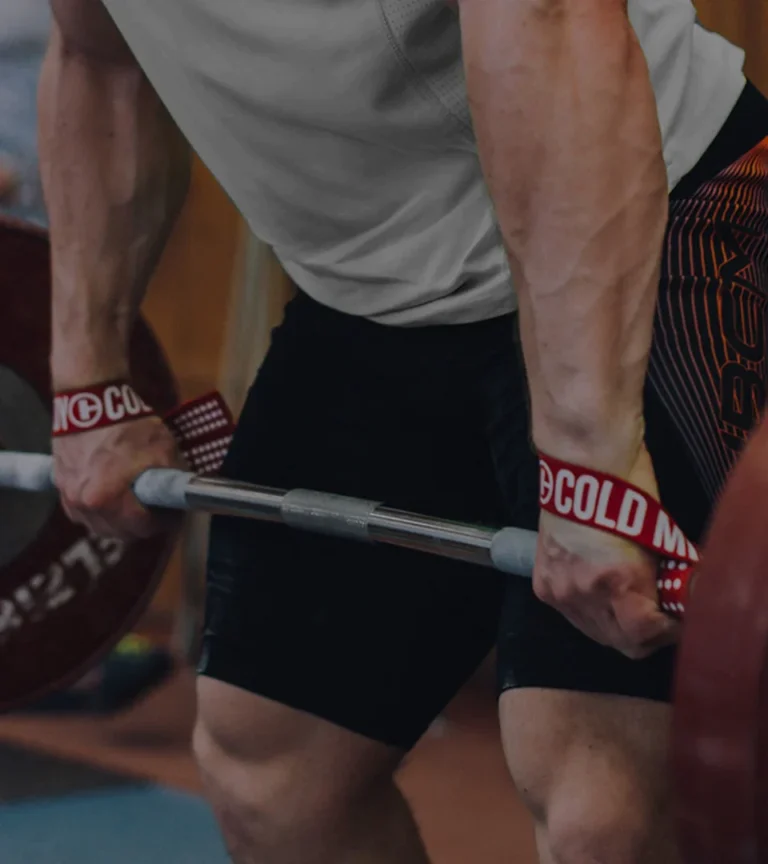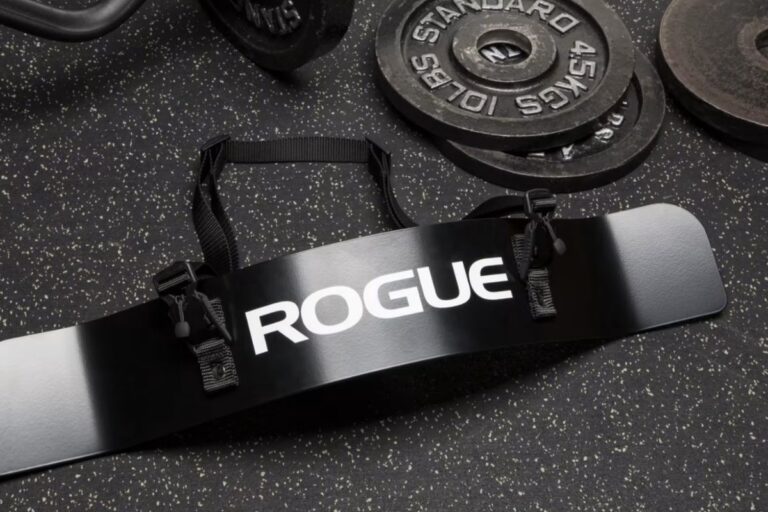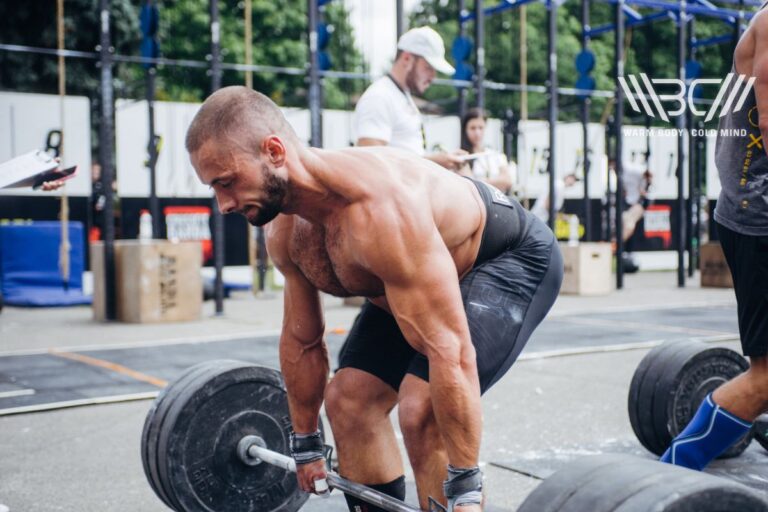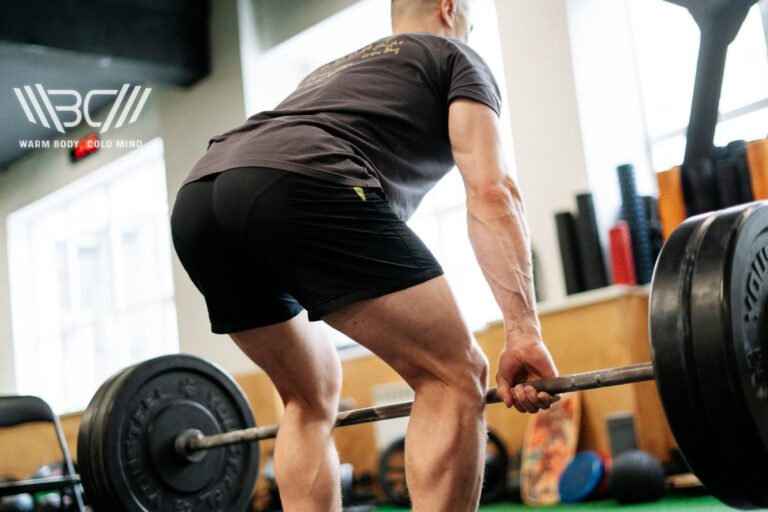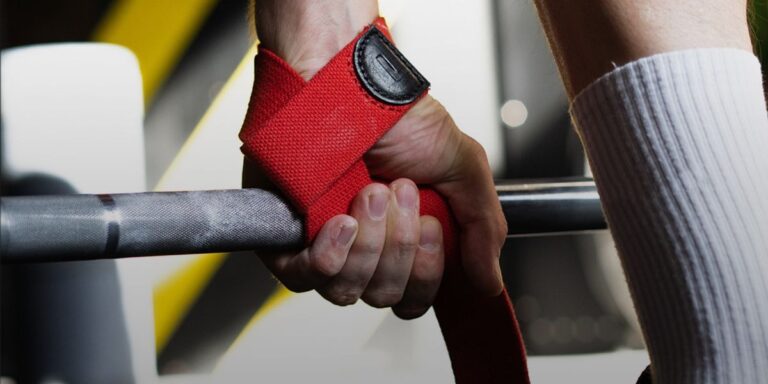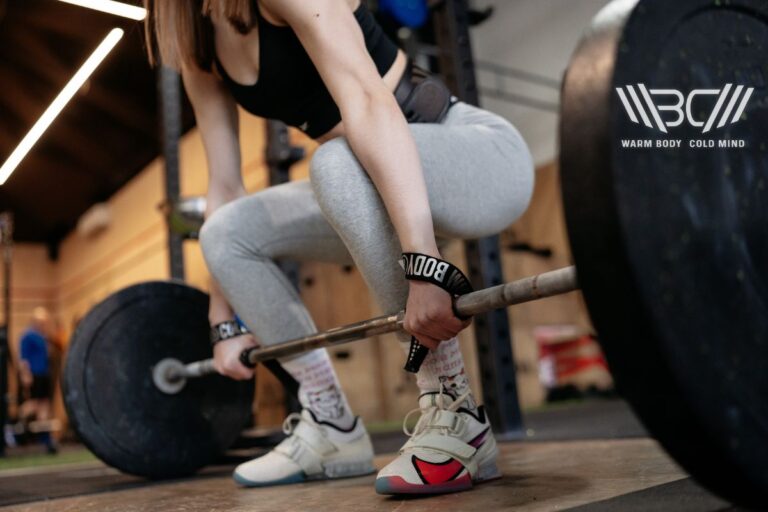How to Wear a Lifting Belt (Detailed Beginner’s Guide)
Don’t worry – there’s not a whole science behind knowing how to wear a lifting belt and if you just pay attention to a few simple steps, you’ll get this down in no time. If you get your measurements right and the belt you have fits you, half of the work is done, and you’ll probably place it well even if it’s your first time.
Be prepared for some repositioning every once in a while, until you find your sweet spot, but overall, this process isn’t exactly a process at all. There are a few steps to it, but that’s what we’re here for.
We’ll leave no stone unturned because this article goes into details about using a lifting belt, what mistakes you should avoid, and how often you need to wear it. You could be deadlifting, squatting, or performing compound movements; it doesn’t matter. Whatever you’re doing, a well-positioned belt will benefit your training immensely.
Let’s go ahead and see how to position your lifting belt just where you need it to be.
How to wear a lifting belt? – Put the belt around your lower back, and tighten it snugly, but make sure it doesn’t restrict your breathing. Use it for heavy lifts and activate your core for support.
What Does a Weightlifting Belt Do for Lifters?
If you’re trying to find out where to wear weightlifting belt, you probably already know what it does, at least in theory. But just in case you’re not 100% sure of it and think it’s partly a fashion statement, let’s go over the basics.
A weightlifting belt has nothing to do with accessorizing; it’s a tool that lifters use to get support during lifts. You won’t see lifters wear a belt all the time because it’s primarily used for heavy compound lifts like squats and deadlifts. The belt supports your lower back and abdominal region, and its purpose is to increase intra-abdominal pressure, which will make your core more stable.

Enhance your strength training with Warm Body Cold Mind leather weightlifting belt providing exceptional support and durability.
This added pressure improves the stability of your spine and makes the exercises easier on it, reduces risk of injuries, and helps you keep an upright posture during heavy lifts. Keep in mind that this doesn’t mean you don’t need to actively engage your core, it only amplifies it.
Another important thing to keep in mind is that you shouldn’t wear the belt all the time. Reserve its use for near maximum or maximum lifts, where your spine is subjected to higher loads. If you wear it at these times, it can help your performance because it will make the lift easier on your back. However, if you rely on the belt too much and wear it all the time, your core won’t be able to naturally develop its strength and stability.
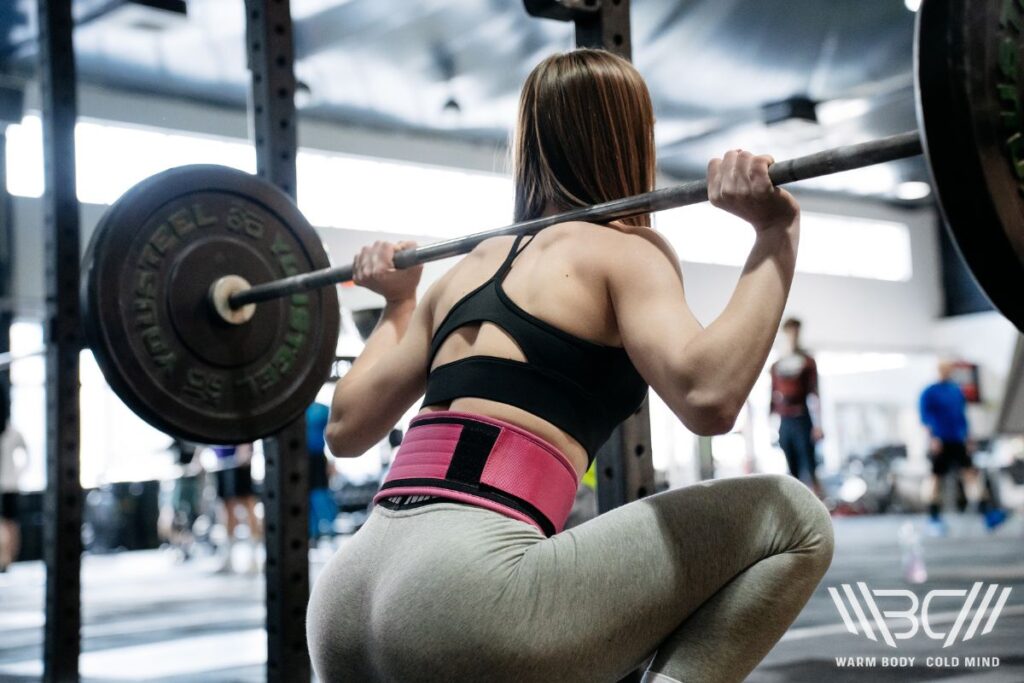
3 Factors to Consider While Wearing a Belt
You want the belt to be an effective part of your lifting routine, and for that to happen, there are a few things to consider.
1. Size
It all begins with choosing the correct size. If you get this wrong, no amount of correct positioning is going to help the belt function like it should. Measure your waist and then compare it to the manufacturer’s size chart. You want the belt to be able to fit snugly around your lower back and abs.
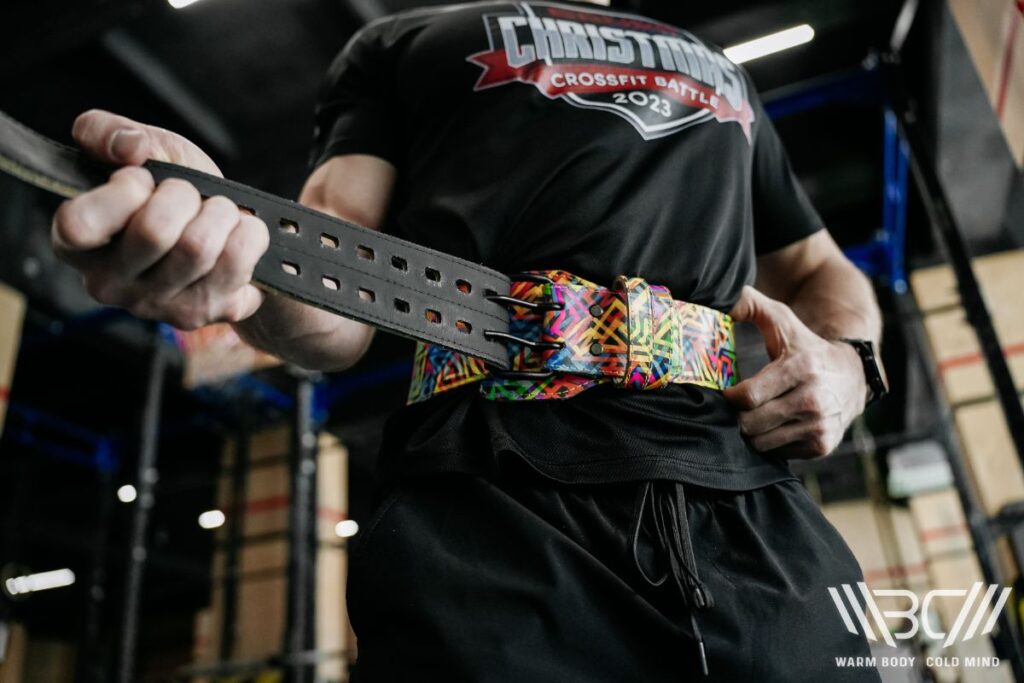
2. Positioning
The belt should go over your abs and around the lower back. If you place it too high or too low, it won’t be as effective. Your goal is to increase intra-abdominal pressure and have your spine supported during heavy lifts, but none of this should impede natural movement.
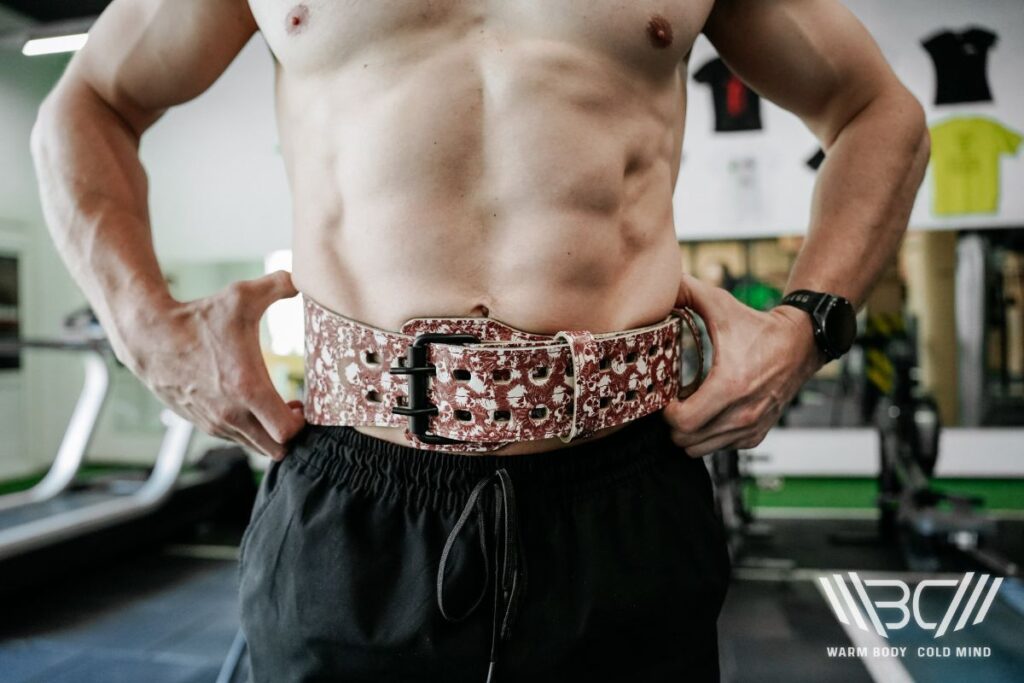
3. Tightness
Tighten it so the fit is snug and supportive, but it shouldn’t constrict your breathing. You need to be able to breathe and move freely, which means there needs to be a balance of snug fit and comfort.
Subscribe!
The latest reviews of must-have home gym training equipment, apparel, and supplements that will enhance your performance and bring you new results.
Where to Wear a Weightlifting Belt?
Assuming you got the belt size right, you now need to know how to put on the weight belt properly (so it actually does its job). It might sound like that’s easier said than done and of course there’s a bit of a learning curve to this, but all it takes is some time for you to see where it fits most comfortably. You’ll need to reposition it here and there until you find the proper weight belt placement, but that’s not hard to do.
1. Low Placement
There’s not a solution that will fit everyone, so you can place your belt higher or lower. If you opt for low placement and position the belt around the waistline and closer to the hips, you’ll get more support for your lower back and lumbar region.
People who like the placement to be lower find it very useful for deadlifts and other hip-hinging movements. The lower position will allow for greater freedom of movement, but it will still support the lower back very well.
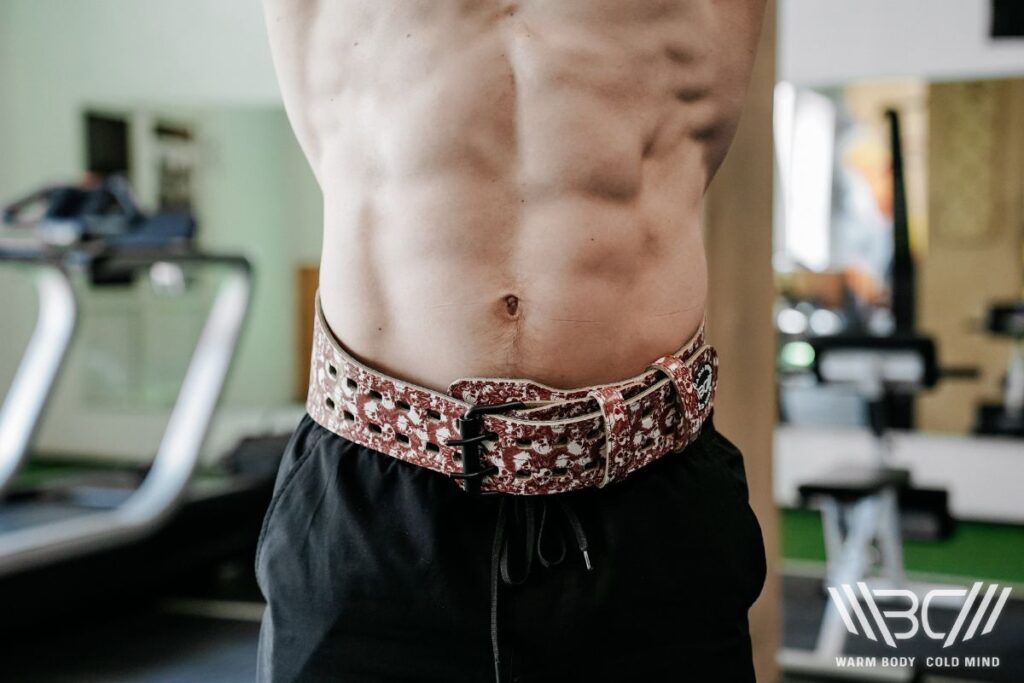
2. High Placement
If you wear the belt higher on the torso, just below the ribcage, it will support the upper abdominal area and the lower part of the ribcage. This position can help during exercises like squats and overhead presses because it’s very effective at increasing intra-abdominal pressure and supporting the entire core.
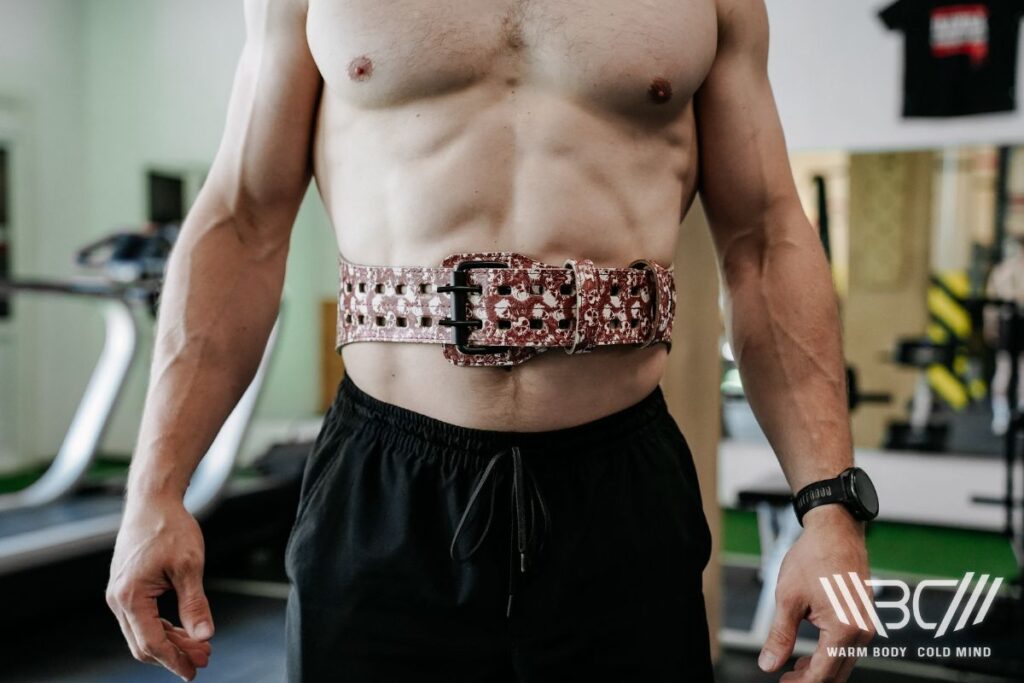
How to Put on a Weightlifting Belt?
In theory, you get a belt in the correct size, unpack it, place it around your waist and start your workout.
In practice, there are a few extra steps to take before your belt fits like it should and before you’re ready to start lifting.
There’s not a solution that will fit everyone, so you can place your belt higher or lower. If you opt for low placement and position the belt around the waistline and closer to the hips, you’ll get more support for your lower back and lumbar region.
1. Accurate Measurement
Start with measuring your waist. Then, look for the size chart on the manufacturer’s site and compare your measurements to check which size would work for you.
2. Secure the First End
Take one end of the belt and fasten it. Many lifting belts come with a prong or lever buckle system. If that’s the case for your belt, make sure the prong is inserted through the appropriate hole, or that the lever is firmly engaged.
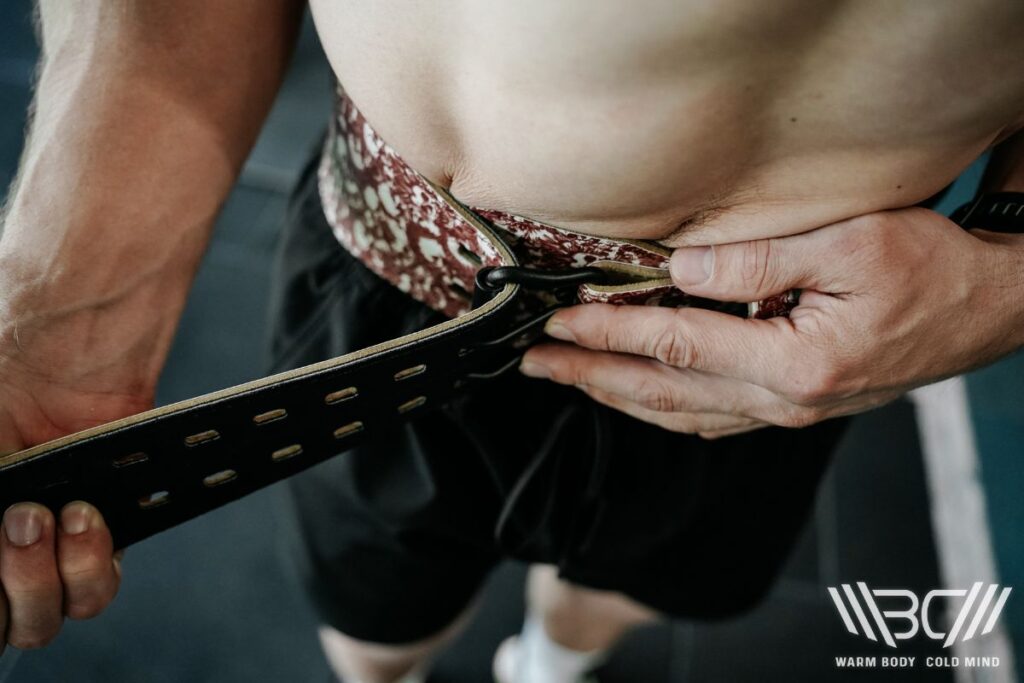
3. Tighten the Belt
After you’ve secured one end, pull the free end of the belt and tighten it until it fits snugly. The fit needs to be firm, but comfortable, so take your time until you find the perfect fit.

Discover the strength of the Warm Body Cold Mind nylon lifting belt. Lightweight and durable, it provides optimal support for your workouts.
4. Alignment
The belt needs to be aligned evenly around your waist. The center of the belt should be at the center of your lower back. A belt that is aligned the correct way will give you uniform support on both sides.
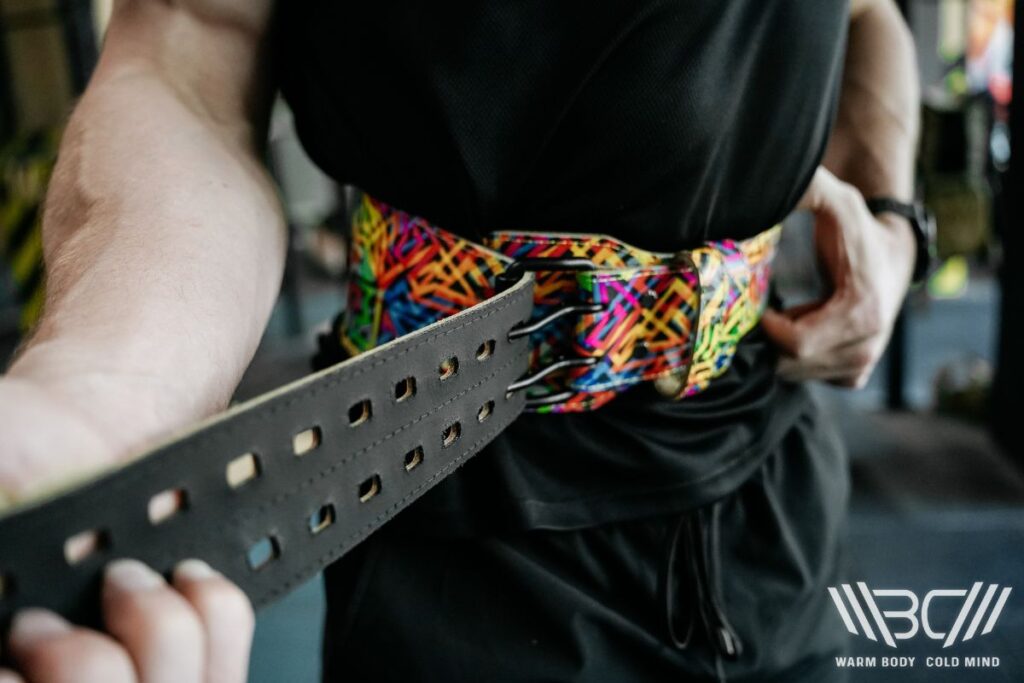
5. Secure the Second End
Now it’s time to fasten the other end of your belt, whether it’s inserting the prong into the correct hole or securing the lever. Double-check the tightness before you secure the second end of the belt.
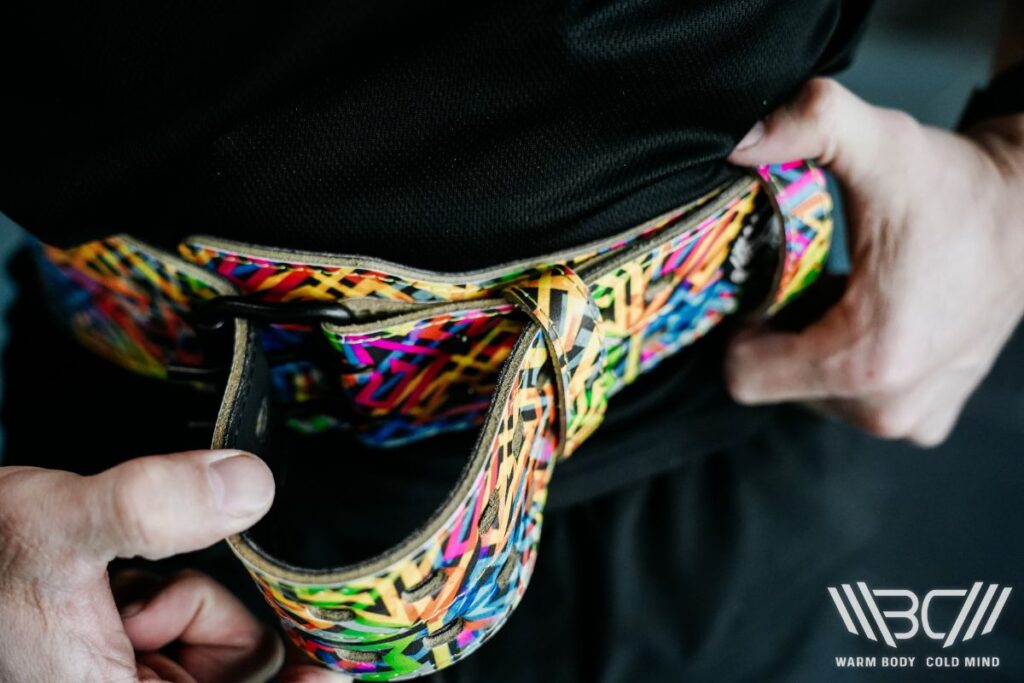
6. Check if the Fit is Comfortable
Do a few bodyweight movements to check if the belt is comfortable enough and make sure it doesn’t restrict your freedom of movement.
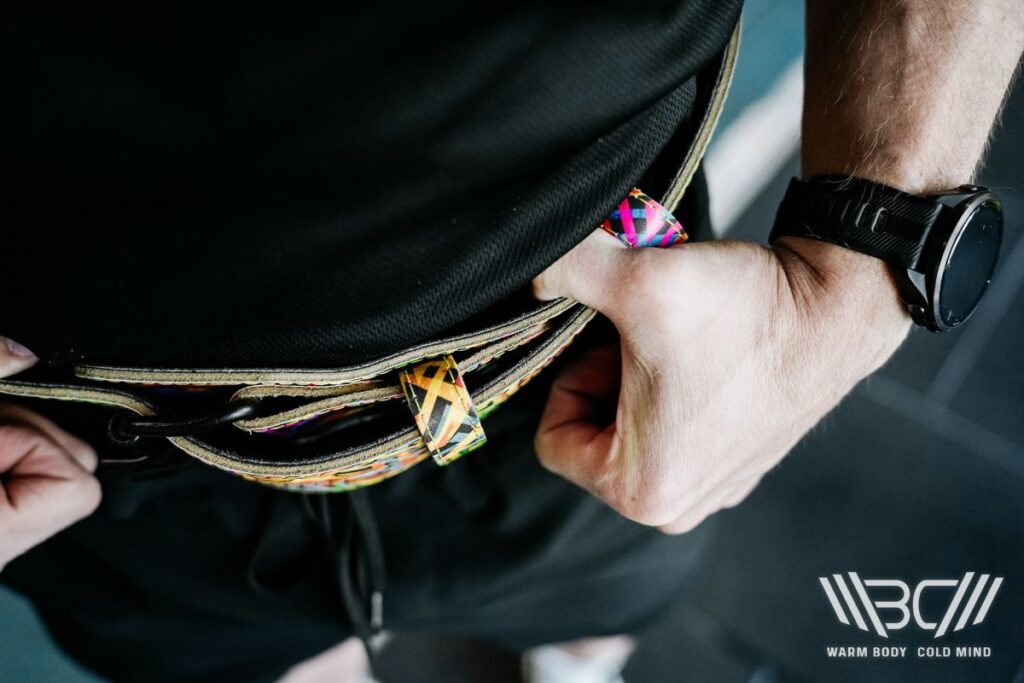
7. Remove Carefully
When you’re done with your workout, remove the belt carefully. Loosen it slowly to prevent abrupt changes in intra-abdominal pressure. This will help your body adjust smoothly to the change.
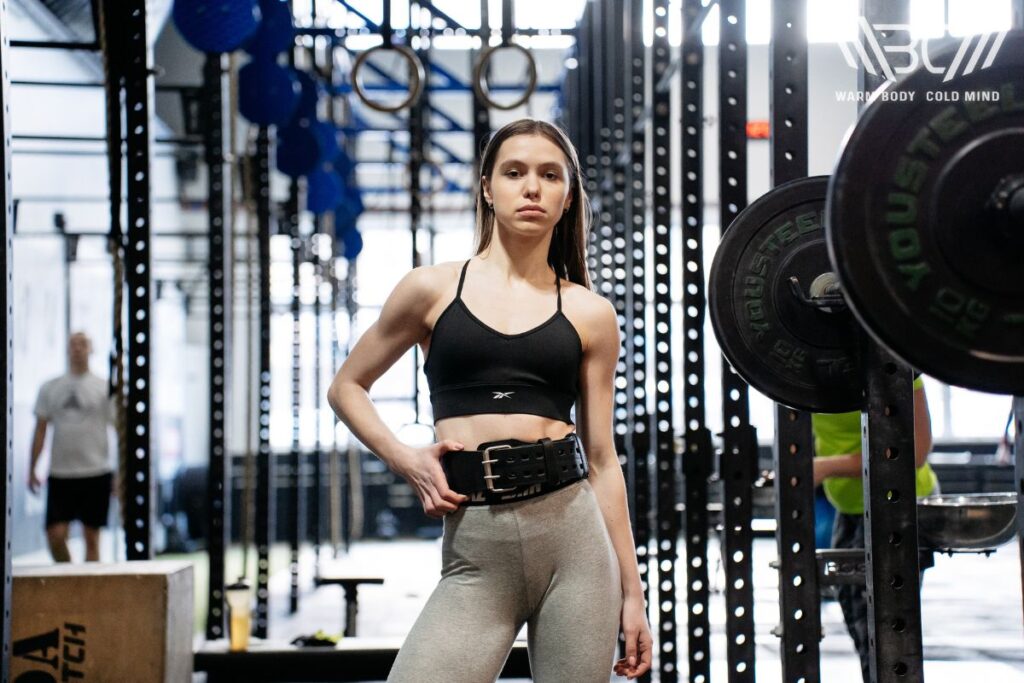
How Often Should You Wear a Weight Belt?
You need to find a way to wear the belt exactly when you need to – not all the time, but still, often enough you get the benefits from having it. Sounds impossible, right? But it isn’t, because knowing when to use a weight belt depends on the type of exercises you do and your personal training goals.
If you’re a lifter, reserve the use of the belt for heavy compound movements where your spine is subjected to significant loads, like squats or deadlifts. This way, you’ll get that increased intra-abdominal pressure you’re after and get support for your lower back and core. The belt will also improve your body biomechanics, which is a fancy way of saying it will help with correct posture.
However, the key is in moderation. If you wear the belt at times it’s not necessary; you’ll make it impossible for your core to naturally develop its strength. If it’s constantly getting outside support, what would make it engage stabilizing muscles? Think about it this way – would you work if you didn’t have to?
Highly unlikely. It’s the same thing with your core, you have to make it work, or the muscles won’t develop their strength. Wear the belt only for maximum and near maximum belts and that way, the belt serves as a tool, not a crutch.
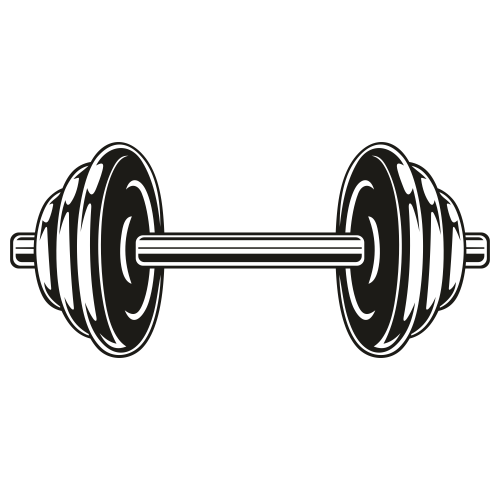
Pro Tip:
How to Break in a Lifting Belt?
You’ve just gotten your new belt and you’re excited to put it on. You get everything secured properly and the size fits, but oh-oh – it’s uncomfortable. But how can it be uncomfortable if it’s the right size and if you’ve taken the time to adjust it properly? How tight should a weightlifting belt be so that it doesn’t feel annoying/rigid?
This scenario is completely normal for beginners, even when they know how should a weightlifting belt fit. Your new belt will always be a bit uncomfortable, and you’ll need to break it in because of that.
One way of doing that is to just wear it during your training sessions and let it gradually mold to the shape of your body. The snug fit will make the belt’s material become more pliable and softer over time.
Another method is to flex and roll the belt in all directions when you’re not wearing it to speed up the process of breaking it in. This will help loosen the fibers and make the belt more flexible, so in time, it will become a lot more comfortable.
If your belt is made of leather, you can use a leather conditioner or oil to nourish the material and prevent it from getting too dry and brittle. If you go this route, remember to use whatever conditioning agent in small amounts and choose the products made specifically for leather.
Patience is key here and unfortunately, there’s no shortcut that will make your belt break in overnight. Be prepared for a little bit of discomfort while the belt is still brand new.
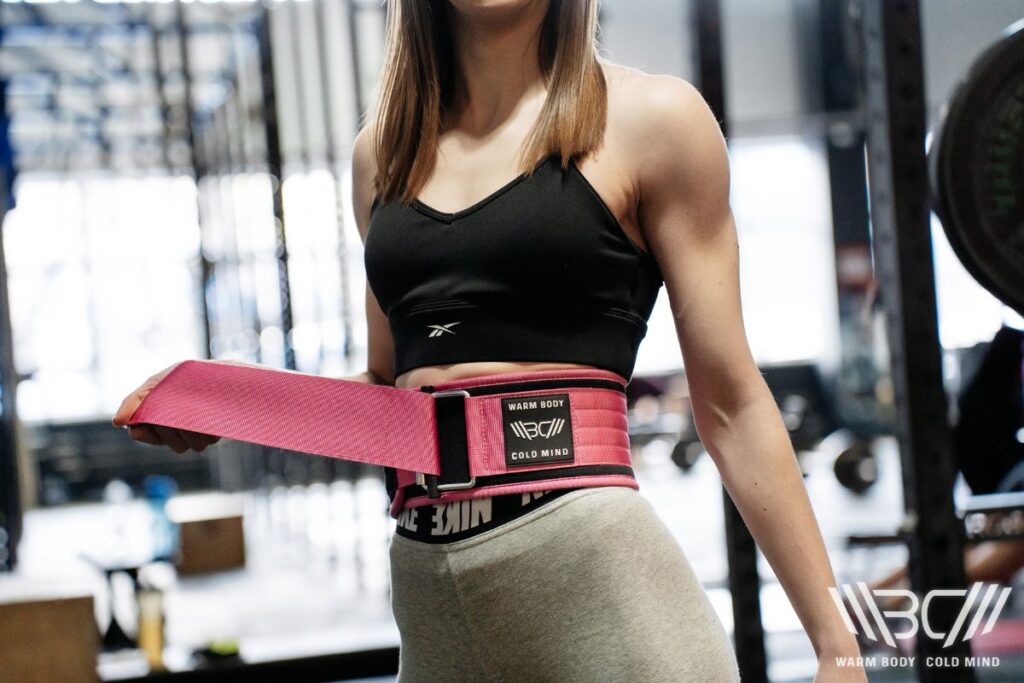
How to Wear Different Types of Lifting Belts?
It’s important to choose the right lifting belt, but it’s also important to know exactly how to wear the specific type of belt you’ve chosen.
1. How to Put On a Leather Belt?
A leather belt starts off with being a little bit uncomfortable, but if you’ve never worn leather shoes, you know that’s to be expected. Leather needs breaking in and that’s just something you need to be prepared for.
As far as the positioning goes, it’s pretty straightforward – place it around your lower back and over your abs. Insert the prong through the proper hole, secure it and that’s it. Remember to fasten it tightly, but not too tightly where it causes issues with breathing and moving. Over time, the belt will mold to your body, and it will become comfortable.
Leather Belt We Recommend – WBCM Leather Weightlifting Belt
If you don’t have a belt yet and you’re looking for a leather one, our very own WBCM Leather Belt is the best choice you can make.
The leather it’s made of is high-quality and the belt itself is extremely durable. The double roller stainless steel buckle is reinforced by four bolts and the belt is made to offer maximum support.
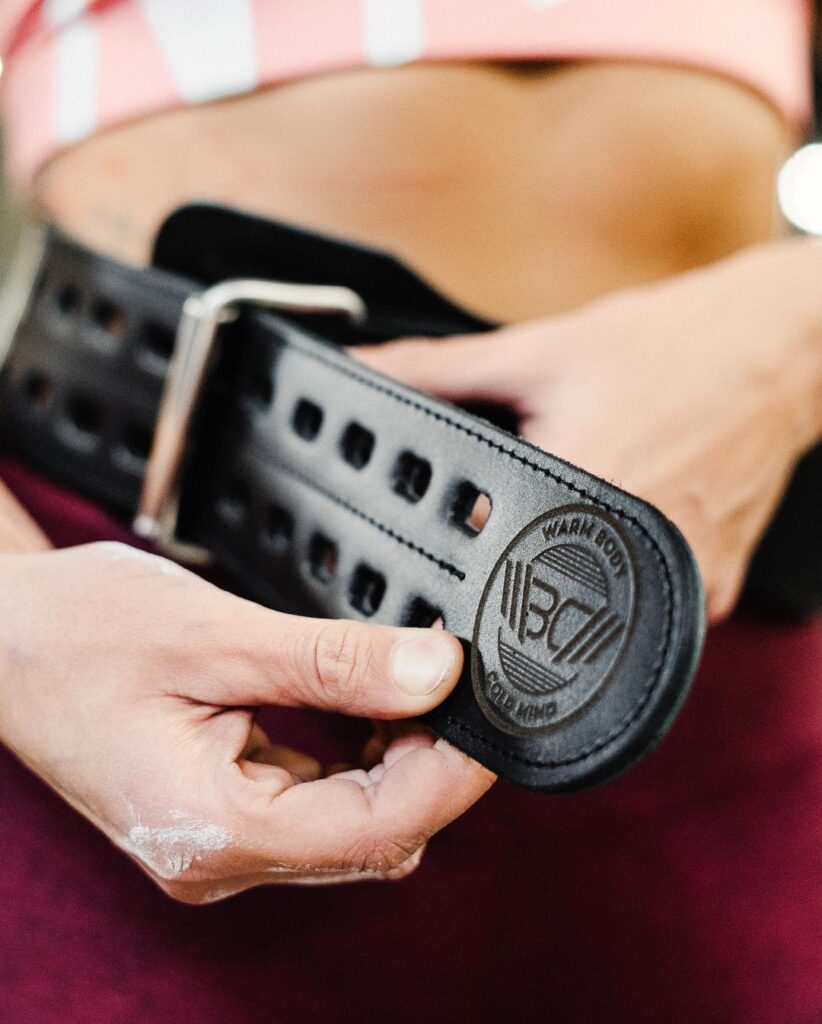
It comes in five sizes – S, M, L, XL, XXL, and XXXL. It is 0.24 inches thick and 4 inches wide, which means it’s wide enough to provide support, but narrow enough to be comfortable and not distracting. It distributes the pressure evenly across your core and stabilizes the spine to prevent accidents and injuries.
Pros
- Made from grade-A leather for premium looks and feel
- Fortified buckle
- Short break-in period
- 4’’ width is both supportive and comfortable
Cons
- More expensive than similar products because of the higher quality
- Available in black color only
2. How to Put On a Nylon Belt?
Nylon belts are versatile and quick to adjust. They’re known for being lightweight, flexible, and although there’s a break in period for them, too, it’s usually shorter than the one for leather belts.
Placing it doesn’t really differ much from the process for the leather belt. You place it around your lower back and align it above the hip bones. Depending on the design, secure the belt with a quick-release buckle or Velcro closure and check if the fit is both tight and comfortable.
Nylon Belt We Recommend – WBCM Nylon Weightlifting Belt
Our nylon belt is available in five sizes, just like the leather one. The nylon it’s made of is premium quality and the belt is made for powerlifting, weightlifting, bodybuilding, cross-training, and functional fitness.
Its self-locking mechanism is its best feature because it makes the belt fit perfectly while staying securely in place. You won’t need to readjust it frequently and your attention can be focused only on your workout.
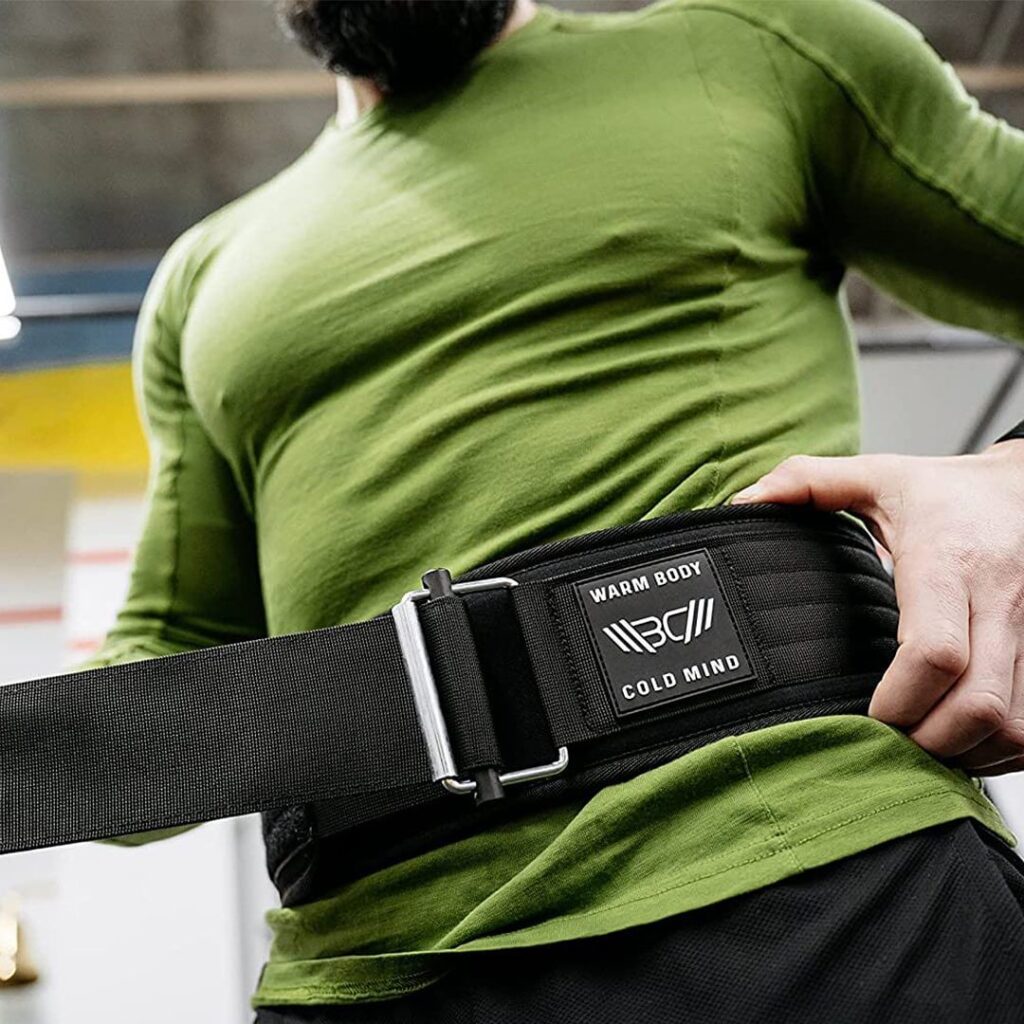
The belt is breathable, so your skin will stay drier compared to how it would be with a leather belt, and it’s pretty flexible. You have four colors to choose from, and if you really want to stand out from the crowd, the bright pink one will make you visible from miles away.
Pros
- Interior suede layer for comfort
- Self-locking system
- Comes in a range of sizes and colors
Cons
- The lever system might be awkward for people who are used to a standard prong/hole belts
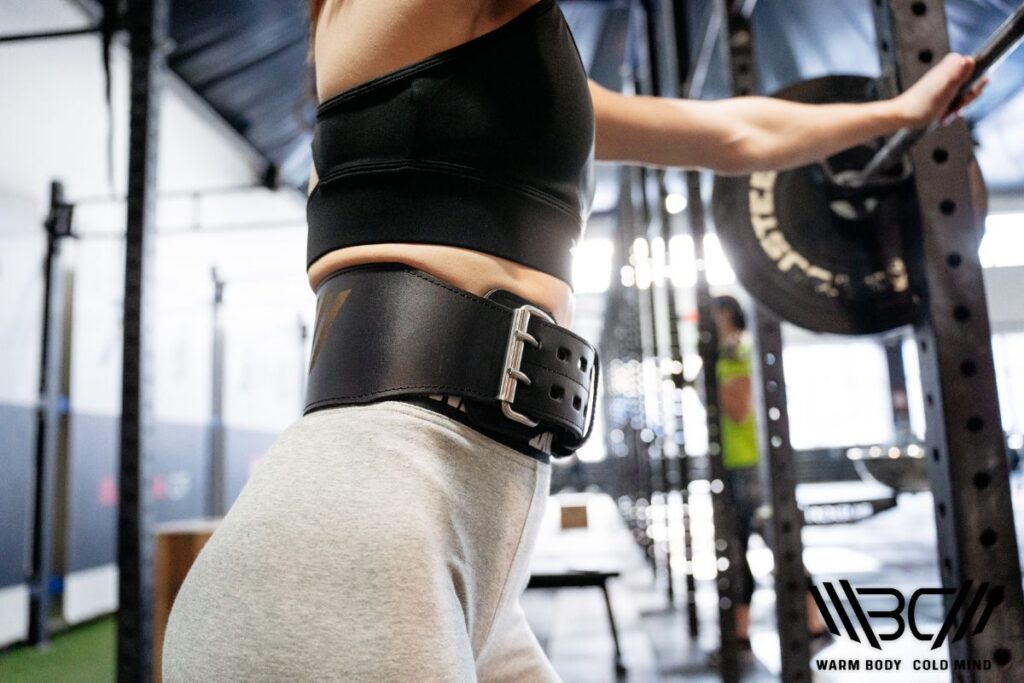
5 Main Lifting Belt Wearing Mistakes
Knowing how to wear and use the belt properly also means you’re aware of the mistakes that come with the process so you can avoid making them. Here are the most common mistakes people make.
1. Incorrect Sizing
Just because something is adjustable doesn’t mean you don’t have to worry about choosing the correct size. If the size is off, the belt will either be too loose or too tight, and neither will make it effective.
2. Misplacement
Positioning is important because placing it too low or too high will also make it ineffective, and it will distract you during workouts. The belt needs to cover the lower back and abs to enhance intra-abdominal pressure.
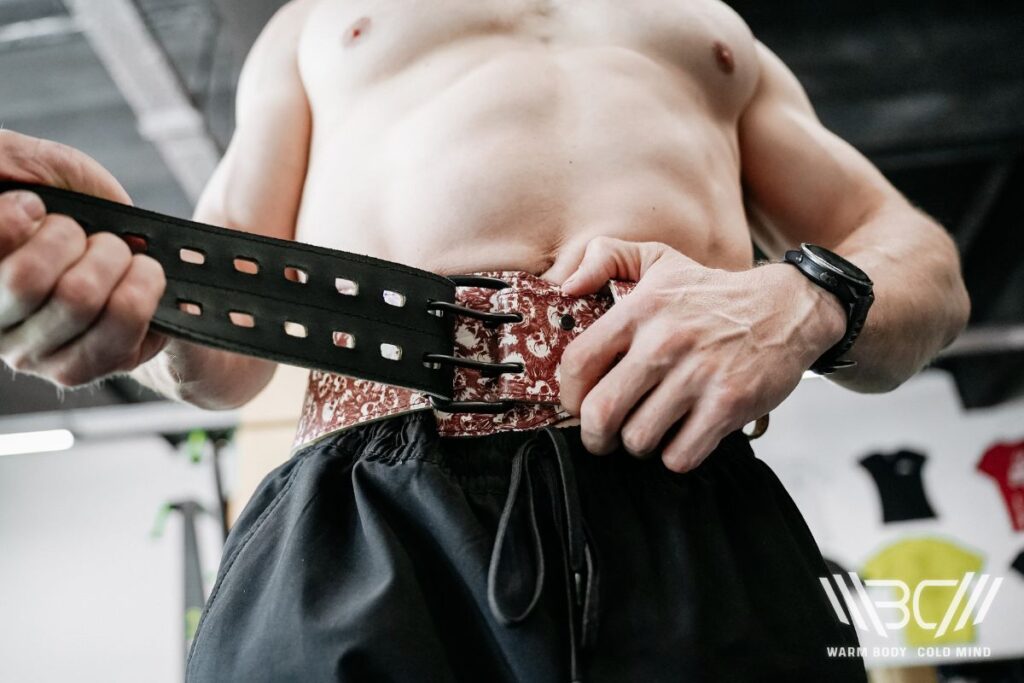
3. Using the Belt Too Frequently
You shouldn’t use a lifting belt for every single exercise because, over time, you’ll start relying on it too much. A belt is made to offer support during heavy lifts, so you don’t need to use it for anything else or you’ll hinder the natural development of your core.
4. Not Engaging the Core
Wearing a lifting belt is not a substitute for engaging the core. You should always consciously engage the core while wearing the belt to create intra-abdominal pressure and increase stability.
5. Tightening Too Much
Since there’s so much emphasis on the belt needing to be tight, it’s no wonder some people take it too far. But you shouldn’t over tighten your lifting belt, especially during warm-up. A belt that is too tight will cause issues with breathing and movement, it will be uncomfortable, and it can mess with the natural warm-up process.
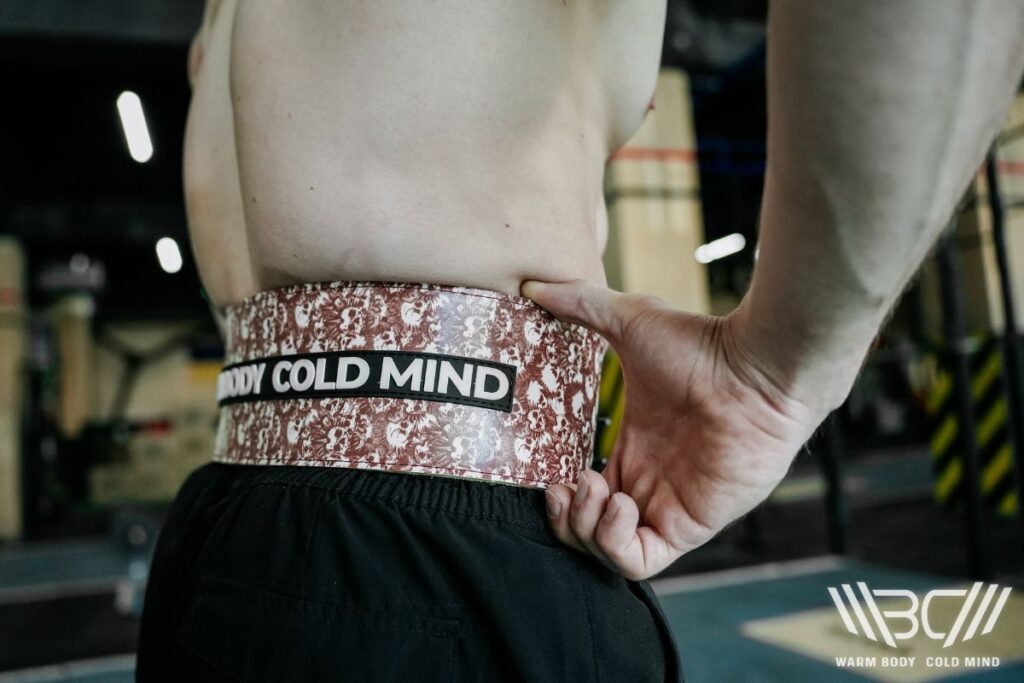
FAQ
Does a Weightlifting Belt Weaken Your Core?
No, a weightlifting belt won’t weaken your core. It will make it more stable and promote intra-abdominal pressure during heavy lifts, but if you wear it too frequently, it can hinder the natural development of your core strength.
Who Should Wear a Weightlifting Belt?
Anyone that does compound lifts like squats and deadlifts should wear a weightlifting belt. It provides extra support for the lower back and core and reduces the risk of injuries.
How Tight Should a Weightlifting Belt Be?
A weightlifting belt needs to fit snugly, but it should allow you to breathe and move without any issues. You might need some time to find the perfect fit if you’re a beginner, but it’s worth it in the long run.
What Is the Best Weightlifting Belt Position?
The best weightlifting belt placement is around the lower back and over the abs. This will improve intra-abdominal pressure and provide the perfect amount of support for your spine during heavy lifts.
Conclusion
That’s all there is to it! Lifting belts are one of the most important tools a weightlifter can use, but only if it’s placed properly! Remember not to tighten it too much, double-check the fit before you start lifting, and take your time with breaking it in.
If you’re in the market for a new belt, you won’t go wrong with WBCM Leather Weightlifting Belt or WBCM Nylon Weightlifting Belt. They both perform wonderfully, it’s just a matter of personal preference when it comes to the material.
Got anything to add to all this belt talk? How have you found the perfect position? Do you have any tips to make this easier for beginners? How long did it take you to break in your belt and do you have any useful tricks to speed the process up?
Share tips, tricks, questions, concerns… Anything you can think of!
Happy lifting! (It will be a lot happier if you position your belt properly! Just sayin’.)
References:
1. Idsart Kingma, Gert S. Faber, Edin K. Suwarganda, Tom B. M. Bruijnen, Rob J. A. Peters, Jaap H. van Dieën “Effect of a stiff lifting belt on spine compression during lifting,” Spine (Phila Pa 1976) 31, no. 22 (2006): E833-E839.
2. J. E. Lander, J. R. Hundley, R. L. Simonton “The effectiveness of weight-belts during multiple repetitions of the squat exercise,” Medicine and Science in Sports and Exercise 24, no. 5 (1992): 603-609.
3. M. Magnusson, M.H. Pope, T. Hansson “Does a back support have a positive biomechanical effect?” Applied Ergonomics, Volume 27, Issue 3 (June 1996): 201-205.
4. N. D. Bourne and T. Reilly “Effect of a weightlifting belt on spinal shrinkage,” British Journal of Sports Medicine 25, no. 4 (1991): 209-212
5. Shirley S.M. Fong, PT, PhD, Louisa M.Y. Chung, RNutr, DHSc, Yang Gao, MD, PhD, Jeff Chak Wai Lee, BHE, Tak Ching Chang, BHE, Ada W.W. Ma, PhD “The influence of weightlifting belts and wrist straps on deadlift kinematics, time to complete a deadlift and rating of perceived exertion in male recreational weightlifters: An observational study,” Medicine (Baltimore) 101, no. 7 (2022): e28918.
Author: Sergii Putsov
PhD in Sport Science, Olympic weightlifting, Strength & Conditioning coach and fitness expert
Sergii Putsov is a professional weightlifter with over 20 years of experience and multiple national medals. He was a member of the National weightlifting team, competing in the 94 kg weight class. Sergii holds a master’s degree in Olympic & Professional Sport Training and a Ph.D. in Sport Science. After his athletic career, Sergii transitioned into coaching and is now responsible for designing training programs, writing blog articles, providing live commentary for international weightlifting competitions, and hosting sport and fitness seminars worldwide.

